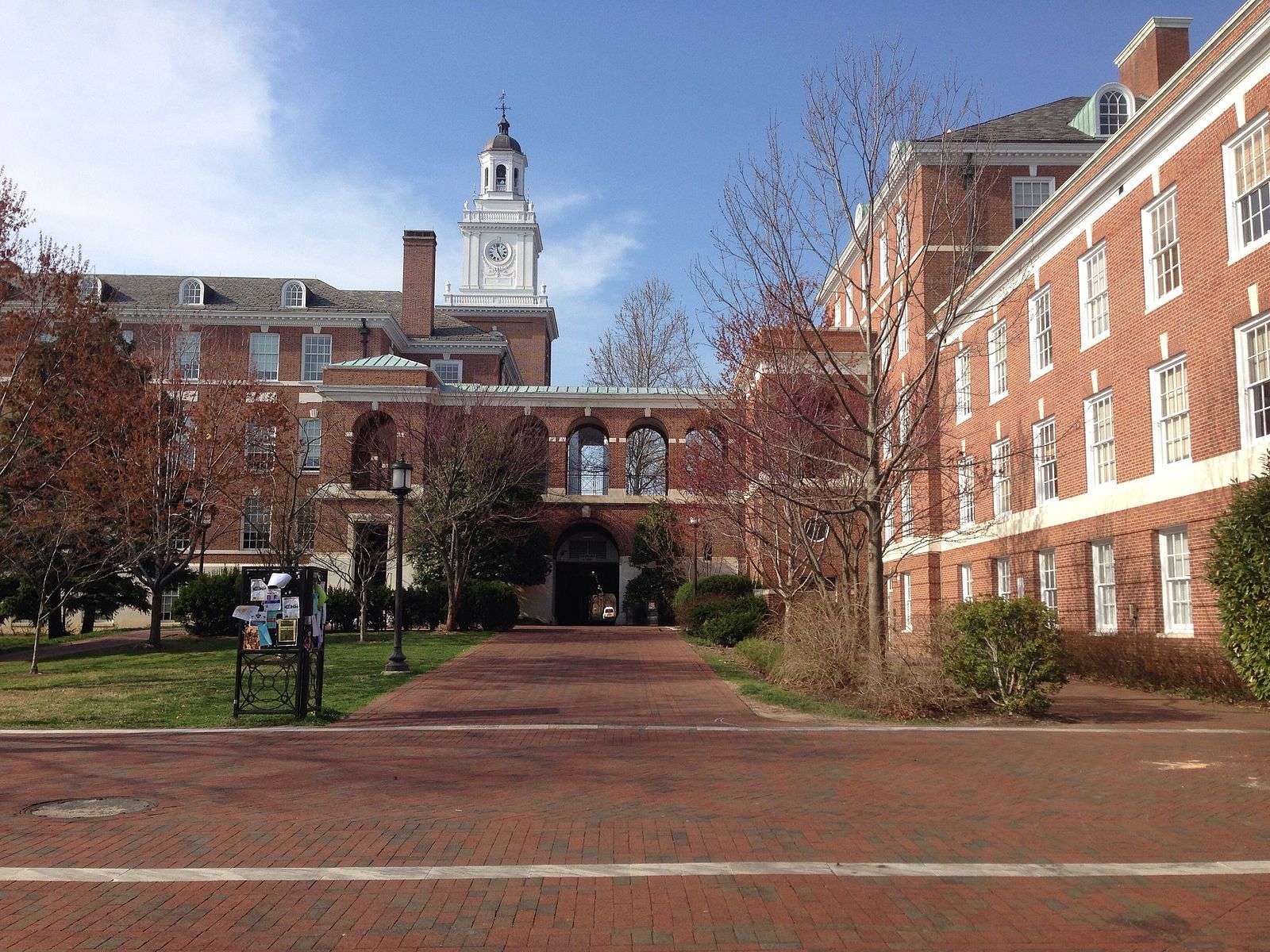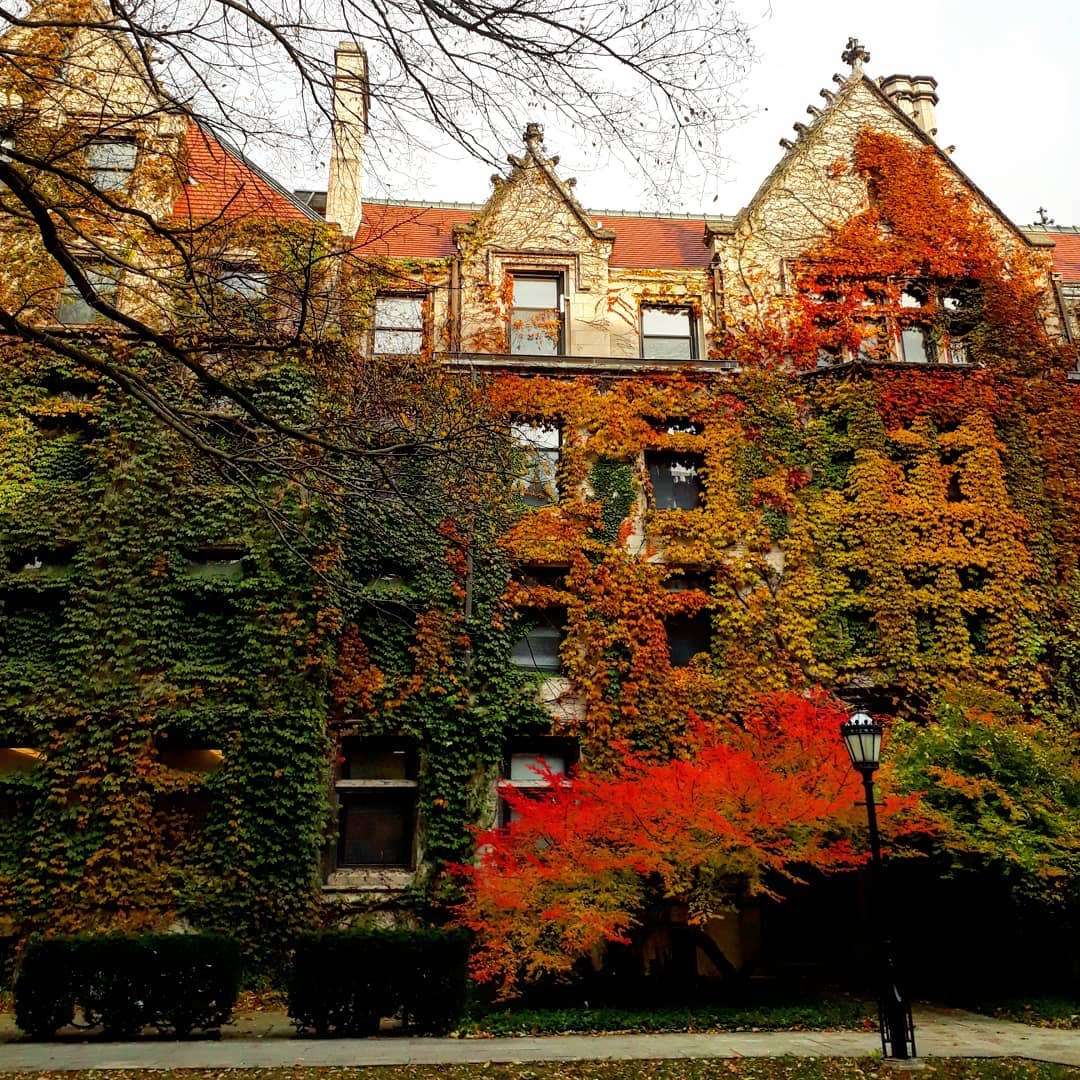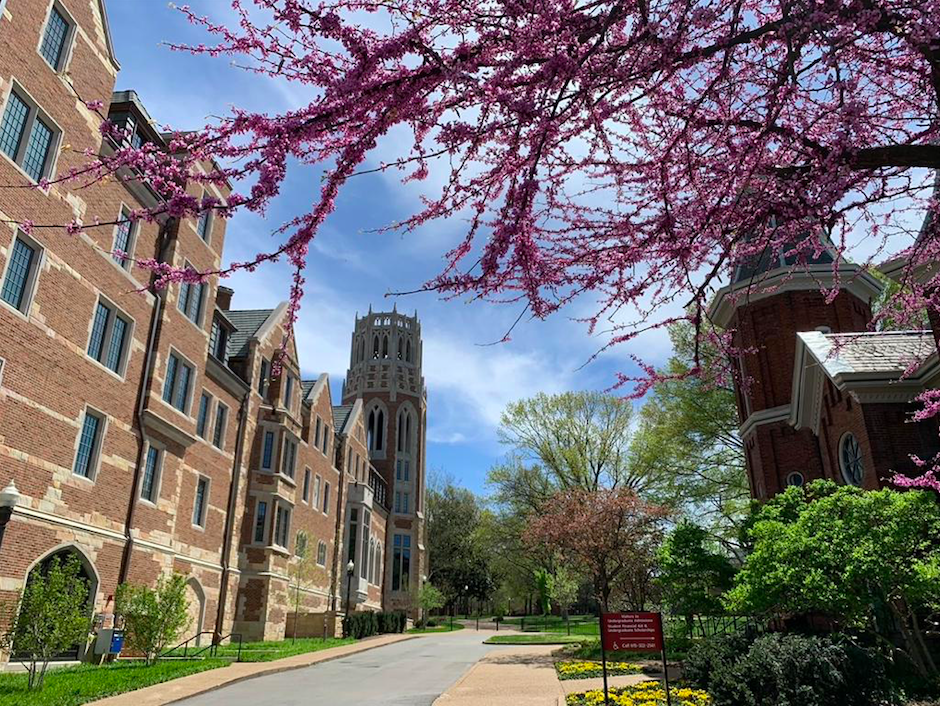The Ivy Coach Daily
The 2024-2025 Complete List of Early Decision 2 Schools

While most of America’s universities only offer one round of Early Decision / Early Action, some schools, including some of the nation’s highly selective schools, offer two rounds of Early Decision. For those schools that provide the second round of Early Decision, the deadline for most of these schools to submit Early Decision 2 applications is typically around the same time that Regular Decision applications are due to the institution — often in early January. So, which universities in America offer Early Decision 2? What are the benefits and drawbacks of applying Early Decision 2? Wonder no more!
Which colleges offer Early Decision 2 and when are the deadlines?
First, which colleges even offer an Early Decision 2 option? Many colleges in America with Early Decision 2 policies are liberal arts colleges.
Schools like Bates College, Bowdoin College, Colby College, Hamilton College, Haverford College, Middlebury College, Pomona College, Smith College, and Swarthmore College, among others, are staples of the list of liberal arts colleges ranked in the top 25 “Best Liberal Arts Colleges” by US News & World Report for 2025 and offer applicants two opportunities to make binding commitments to attend.
However, some universities are staples of the list of best national universities ranked in the top 50 “Best National Universities” by US News & World Report for 2025, offering the option as well. Such schools include American University, Carnegie Mellon University, George Washington University, Johns Hopkins University, New York University, Tufts University, Tulane University, University of Chicago, Vanderbilt University, Wake Forest University, and Washington University in St. Louis.
The complete list of colleges offering Early Decision 2 during the 2024-2025 admissions cycle, including the respective application deadlines, is below. Schools with an asterisk are ranked by US News & World Report in the top 50 “Best National Universities” for 2025, while schools with a hashtag are ranked by US News & World Report in the top 25 “Best Liberal Arts Colleges” for 2025.
| College / University | Early Decision 2 Deadline |
| American University | January 15 |
| Antioch College | January 2 |
| Babson College | January 4 |
| Bates Colleges | January 11 |
| Baylor University | February 1 |
| Bennington College | January 15 |
| Bentley University | January 7 |
| Boston College * | January 10 |
| Boston University * | January 4 |
| Bowdoin College # | January 5 |
| Brandeis University | January 1 |
| Bryant University | January 15 |
| Bryn Mawr College | January 1 |
| Bucknell University | January 15 |
| Carleton College # | January 15 |
| Carnegie Mellon University * | January 3 |
| Case Western Reserve University | January 15 |
| Catholic University of America | January 15 |
| Claremont McKenna College # | January 11 |
| Clark University | January 15 |
| Colby College # | January 1 |
| Colgate University # | January 15 |
| College of the Atlantic | January 15 |
| College of the Holy Cross | January 15 |
| College of William and Mary * | January 2 |
| College of Wooster | January 15 |
| Colorado College | January 15 |
| Connecticut College | January 15 |
| Davidson College # | January 2 |
| Denison College | January 15 |
| Dickinson College | January 15 |
| DePauw University | January 15 |
| Drew University | January 15 |
| Emerson College | January 3 |
| Emory University * | January 1 |
| Fairfield University | January 15 |
| Franklin & Marshall College | January 15 |
| Furman University | January 15 |
| George Washington University | January 5 |
| Gettysburg College | January 15 |
| Grinnell College | January 1 |
| Grove City College | December 1 |
| Hamilton College # | January 4 |
| Hampshire College | January 4 |
| Harvey Mudd College | January 5 |
| Haverford College # | January 6 |
| High Point University | February 1 |
| Hobart and William Smith Colleges | January 15 |
| Illinois Institute of Technology | January 1 |
| Jewish Theological Seminary | January 1 |
| Johns Hopkins University * | January 4 |
| Kenyon College | January 15 |
| Lafayette College | January 15 |
| Lake Forest College | January 15 |
| Lehigh University | January 1 |
| Loyola Marymount University | January 8 |
| Macalester College | January 1 |
| Marist College | February 15 |
| Middlebury College # | January 3 |
| Mount Holyoke College | January 4 |
| Muhlenberg College | February 1 |
| New York University * | January 1 |
| Northeastern University | January 1 |
| Oberlin College | January 2 |
| Occidental College | February 1 |
| Pitzer College | January 8 |
| Pomona College # | January 8 |
| Providence College | January 15 |
| Reed College | December 20 |
| Rensselaer Polytechnic Institute | December 15 |
| Rhodes College | January 15 |
| Rochester Institute of Technology | January 1 |
| Rollins College | January 5 |
| Santa Clara University | January 7 |
| Saint Joseph’s University | January 15 |
| Sarah Lawrence College | January 15 |
| Scripps College | January 5 |
| Sewanee: The University of the South | January 15 |
| Skidmore College | January 15 |
| Smith College # | January 1 |
| Southern Methodist University | January 15 |
| Springfield College | January 15 |
| Stevens Institute of Technology | January 15 |
| Stonehill College | February 1 |
| St. Olaf College | January 15 |
| Swarthmore College # | January 4 |
| Syracuse University | January 1 |
| Texas Christian University | February 1 |
| Trinity College | January 15 |
| Trinity University | January 15 |
| Tufts University * | January 1 |
| Tulane University | January 8 |
| Union College | January 15 |
| University of Chicago * | January 4 |
| University of Denver | January 15 |
| University of Miami | January 1 |
| University of North Carolina Asheville | January 15 |
| University of Richmond # | January 1 |
| University of Rochester * | January 5 |
| Ursinus College | February 1 |
| Vanderbilt University * | January 1 |
| Vassar College # | January 1 |
| Villanova University | January 1 |
| Wake Forest University * | January 1 |
| Washington and Lee University # | January 1 |
| Washington University in St. Louis * | January 1 |
| Wellesley College # | January 1 |
| Wesleyan University # | January 1 |
| Wheaton College | January 1 |
| Whitman College | January 15 |
| Worchester Polytechnic Institute | January 15 |
| * – Ranked in Top 50 of 2025 US News & World Report ranking of Best National Universities | # – Ranked in Top 25 of 2025 US News & World Report ranking of Best Liberal Arts Colleges |
What’s The Difference Between Early Decision 1 And 2 For Students?
Early Decision 1 deadlines are typically at the beginning of November. Students usually learn of their decisions — whether accepted, deferred, or denied around mid-December. So they’ll know their decision before they submit their Regular Decision applications.
Early Decision 2 deadlines are typically at the beginning of January (though the deadlines can vary somewhat). So, students submit their Early Decision 2 applications in conjunction with submitting their Regular Decision applications.
What’s The Difference Between Early Decision 1 And 2 For Admissions Officers?
Admissions officers tend to be more lenient with Early Decision 1 applicants.
Why’s that? When admissions officers evaluate the candidacies of Early Decision 1 applicants, they’re more insecure. Will the school get a large Early Decision 2 and Regular Decision applicant pool? Will the school get a strong Early Decision 2 and Regular Decision applicant pool?
The leniency of admissions officers with Early Decision 1 applicants is rooted in insecurity.
The fact is they won’t know about the strength and size of their overall applicant pool until after the Regular Decision submission deadline. As such, they’re more forgiving of Early Decision 1 applicants because they don’t know what’s around the bend. In contrast, when they evaluate Early Decision 2 candidates, they already know the size and strength of their Early Decision 1, Early Decision 2, and Regular Decision applicant pools.
Early Decision 2: Less Advantageous Than ED1, But Better Than Regular Decision
So, while admissions officers appreciate it when students make binding commitments to attend — during Early Decision 1 or Early Decision 2 — they appreciate the Early Decision 1 applicants more. This is also the case because they know their ED2 applicants may have applied to another ED 1 school and been deferred or denied admission. If you’re wondering if there’s a baked-in advantage to applying Early Decision 2 vs. Regular Decision, there sure is. Admissions officers still value that commitment to attending to bolster their yield. It’s just not as powerful as an ED1 commitment. Early Decision 1 and Early Decision 2 are not created equal.
Why Should a Student Apply For Early Decision 2?
If a student was deferred or denied admission in the Early Decision 1 round or couldn’t commit to a school by early November but is ready to commit to a school around early January, then applying to an Early Decision 2 school makes sense. That’s, of course, if the student knows they wish to attend this school to which they’re making a binding commitment above all other schools and/or they’ve strategized and realized their best chance of getting into the best school possible after the November Early deadlines have passed is by applying Early Decision 2.
Can A Student Get Out Of A Binding Early Decision 2 Commitment?
No, just like when a student applies under Early Decision 1 and gets in, they’re bound to matriculate if they get in through Early Decision 2. Generally, the only exception is when a student’s family’s financial situation has changed dramatically, and the offer of financial assistance does not meet the family’s level of need. But think again if you plan on applying Early Decision 1 or Early Decision 2 and are trying to wiggle out of your commitment. You could well jeopardize your admission to the school that offered you admission under the ED policy — and to your other schools. Your word is your bond.
What Are The Pros And Cons Of Applying Early Decision 2?
The admissions statistics at schools that offer Early Decision 1 and Early Decision 2 rounds and the Regular Decision round say it all. Let’s take Johns Hopkins University as an example. For the Class of 2027, 550 Early Decision 1 applicants earned admission, while only 259 Early Decision 2 applicants got in. The overall admission rate for the JHU Class of 2027 was approximately 6.2%.
This data is emblematic of the Early Decision 1, Early Decision 2, and Regular Decision admission rates at many highly selective colleges that offer two rounds of Early admission in addition to Regular Decision. The Early Decision 1 admission rate tends to be significantly higher than the Early Decision 2 admission rate, and both tend to be considerably higher than the Regular Decision admission rate.
However, it can sometimes be challenging to discern the differences since some schools lump their Early Decision 1 data with their Early Decision 2 data, simply reporting the two rounds as their Early Decision pool.
Is Getting Into A Top University In Early Decision 1 Or Early Decision 2 Easier?
Getting into a top university through Early Decision 1 is easier as the admissions statistics at almost every highly selective university lay bare. That being said, there’s still an advantage to applying Early Decision 2. The advantage isn’t as strong as applying Early Decision 1. But it sure beats applying Regular Decision.
Other Frequently Asked Questions Regarding Early Decision 2
Can A Student Regret Getting Into Their Early Decision 2 School?
Yes. When students apply through Early Decision 1 and earn admission, they never get to apply to schools in the Regular Decision round. They may apply to a couple of schools Early Action (e.g., a student can apply to Columbia University Early Decision and the Massachusetts Institute of Technology, the University of Chicago, and the University of Michigan, among other public universities and private universities with non-restrictive Early Action policies). However, they’re finished with the college admissions process if they get into their Early Decision school. So, they’re sometimes left wondering if they could have gotten into a more selective school.
That said, there’s no wonder when a student applies through Early Decision 2. They might earn admission Early Decision 2 to Johns Hopkins University and get denied admission to each of the eight Ivy League schools. Or they could get into Johns Hopkins and Harvard College.
A few years back, we had a student first come to us as a client after their Early Decision I denial. They told us they dreamed of attending Johns Hopkins and applying through ED 2. We helped them with their JHU application and several other applications, including those from Princeton University. The student got in ED 2 to JHU. The student also got into Princeton.
Of course, she had to go to JHU as she made a binding commitment. And we didn’t apologize since that was the level of risk she wanted to take. JHU was her stated dream. We helped her achieve her dream. She just didn’t realize our help could also lead to her admission to Princeton. She kicked herself but got over it a few days later and ended up loving Johns Hopkins. A couple of years later, a similar story played out when a student of ours got into Columbia ED 1 and MIT EA. She didn’t think she could get into MIT. She did.
Why Do Admissions Officers Say There’s No Advantage In Applying Early Decision 1 Or 2?
Some admissions officers may say this, but others are more forthright. The statistics are clear. There’s a major advantage when a student makes a binding commitment to matriculate if offered admission, as that applicant will have increased odds of admission. In short, if a student shows love to a college, they’re more likely to show that love back — in spades.
But for those admissions officers who don’t tell it like it is and insist there’s no advantage in applying ED 1 or ED 2, it’s often because they don’t want to make it seem like they offer preferential treatment to privileged applicants.
After all, many students from low-income backgrounds who often also happen to be underrepresented minorities don’t apply Early Decision since they prefer to weigh financial aid offers in Regular Decision (this, of course, isn’t necessary since students can simply plug their numbers into the Net Price Calculator online and know exactly what they’ll receive in aid before the Early round but many students and their parents don’t realize this reality).
So admissions officers often understate the competitive Early Decision advantage — either through Early Decision 1 or Early Decision 2 — in the spirit of equity.
Is A Binding Early Decision 2 Commitment Really Binding?
Yes. Short of a major change to your family’s financial circumstance, Early Decision really is binding. We can’t stress this enough.
You are permitted to use www.ivycoach.com (including the content of the Blog) for your personal, non-commercial use only. You must not copy, download, print, or otherwise distribute the content on our site without the prior written consent of Ivy Coach, Inc.
TOWARD THE CONQUEST OF ADMISSION
If you’re interested in Ivy Coach’s college counseling, fill out our complimentary consultation form and we’ll be in touch.
Get Started




